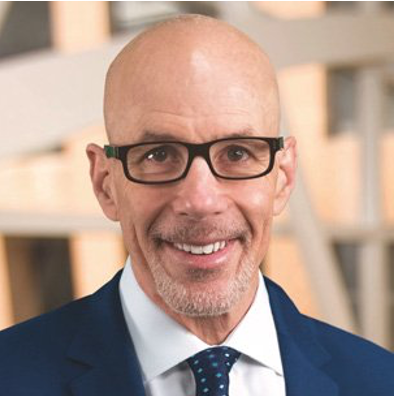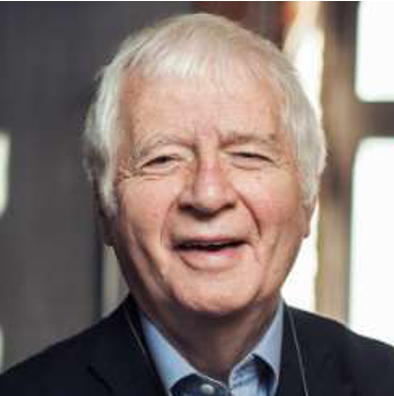Webinar Recap: Is this the Amazon Moment for the Arts?
May 19 (Replay at end of page)
There is certainly nothing simple nor obvious about the moment in which arts organizations currently find themselves living. Over and over in our conversations with arts leaders we hear that things will most certainly change coming out of this crisis—we will not be returning to the world we once knew. While most say that with certainty, there is far less confidence about what that new world looks like and whether arts organizations will be victims or perpetrators of that change. The current crisis provides us with a unique opportunity – we know we are in the midst of disruption. The question is how we can play a role in shaping the new world.
To help arts leaders answer that question, The Advisory Board for the Arts invited an impressive panel from both in and outside of the arts industry to join our May 19 webinar, “Is this the Amazon Moment for the Arts?” and share their perspective on how the arts industry should examine and adapt their business models during these unprecedented times. Panelists included: Alan Fletcher, President and CEO, Aspen Music Festival and School, Larry Keeley, Cofounder, Doblin, a Deloitte Business, Dr. Stephen Klasko, President, Thomas Jefferson University and CEO, Jefferson Health, and Jasper Parrott, Cofounder and Executive Chairman, HarrisonParrot, Ltd.
An Amazon Moment
The impetus for the title of our webinar was a recent article written by one of our guests, Dr. Stephen Klasko, “This is Healthcare’s Amazon Moment”. Stephen’s perspective is that both the healthcare and arts industries are going through significant changes that likely would have come regardless of our current situation – trends that were already in motion have been accelerated. In response to the current situation, Steve’s organization has been examining three questions to think through changes they may need to make to their model moving forward:
Do we really need to exist as a standalone entity?
Do we need all our existing infrastructure? Or could it be shared in some way?
How could we adapt our distribution model?
That third question is what really spurred the Amazon thought for Stephen. When Amazon disrupted the retail space, some companies immediately assumed they had to move to online completely (e.g., Circuit City). Those companies didn’t fare well. On the other end of the spectrum, some companies refused to believe customers would ever value online like they do stores (e.g., Macy’s). Those also haven’t fared well. However, there were a set of companies who saw it as a “both and” opportunity – companies like Target and Amazon—who have been tremendously successful. Stephen believes both health care and the arts have a similar opportunity right now.
When asked if the Amazon moment resonates with him, Jasper Parrott replied that it does, but he also believes there have been a whole series of amazon moments at accumulating speeds over the past few years. Most of the arts world still operates on a 19th century model that results in innate friction between the central contribution of artists, the framework through which they are displayed, and the distribution of the art itself. He believes there is a fundamental question around the value of artistic activity and how that value is presented to and reported to society. The question the Amazon moment should force us to answer is how do we value the arts and how do we integrate it into our larger values system?
A Mindset Shift: From Adversity to Advantage
Larry Keeley shared that most innovation is rooted in confusion, chaos, or fear. And innovation is not limited to one single organization during a time of disruption. He referred to the scientific concept of simultaneity of discovery to suggest that the mechanisms for great breakthroughs are widely distributed. For example, right now there is widespread evidence that artists are in a survival moment.
Larry shared that one of his tried and true recommendations when working with companies facing disruption is to think about how to flip adversity to advantage – ask yourself, how can I do something new to dig myself out of the current situation? Larry shared a story about working with a Chicago public radio station back in the 90s. The radio station had the same model for years – report on sports from yesterday, the weather for today, and the traffic right now. Larry emphasized the need to tell stories in a new way. The result of this change was the radio program, This American Life – a program still wildly successful today. He emphasized that if organizations pay enough attention on how to reinvent for this adversity, they could very well end up with a strategy that spurs them ahead for the long term.
What to Do in This Moment
Thinking practically, what does all of this mean for what arts organizations should be doing right now?
Trust the talent. Artists right now are your greatest asset. They will have rich, inspiring, and authentic ideas. Alan Fletcher emphasized that it is artists who are leading the way and finding the innovations. A colleague recently said to him that we, as leadership, must take a different view. The artists themselves are not relying on how things have always been, they are finding new ways forward.
Get your unfair share of attention. Now is the time to do something to create a riveting, emotionally resonant experience that people will respond to.
“Hybridize” competencies that you are used to using that can lead to new business models. Larry shared an example of what this could look like: invite healthcare workers who have antibodies to the virus to come watch a performance. You could then live stream the performance, charge 5 pounds to view it and announce that 4 of the 5 pounds will be go toward supporting struggling artists.
Think about the Now, Near, and Far. The core idea of this framework from Jim Hackett, CEO of Ford Motor Company, is that in any volatile and uncertain environment, organizations need to keep in mind these three time frames—not as a continuum, but simultaneously. Think about what the “far” will be and pivot through the “near” to get there.
Experiment, experiment, experiment. Now is the time to test and learn what works and what does not. Interestingly, Alan framed the idea of experimentation as a case for philanthropy. Donors want organizations to innovate. Stephen emphasized this point, saying that there will be more philanthropy for organizations who can get their donors excited about what they are doing right now.
Changes Ahead
We asked our panelists what they believe will fundamentally change in the future, and the short answer is a lot. Alan shared that the industry will need to learn quickly how to monetize content. Additionally, he emphasized the importance of having your mission clearly evident in all your digital content. While in the past, arts organizations were not typically in competition with other institutions outside of their cities, the digital world changes that. It is important to use your mission to differentiate yourself. Finally, Alan sees a real opportunity to create more of an informational and educational aperture to a performance. He gave an example of a digital board game that put you into the story of a piece of music – something more engaging than the traditional program notes or music clips you might find on an organization’s website. Alan thinks it will be critical to prepare patrons to have a more valuable experience when they are together.
The other area that will likely require significant changes to move forward with more digital content is negotiations with unions. Participants brought this up as a critical factor to being able to build a digital-live hybrid model.
Hope for the Future
Despite the challenges facing the industry today, all of our panelists shared a great deal of hope for the arts in the future. In fact, Larry believes that the arts will play a critical role in getting people back together in communities. People like to be around each other and like memorable, resonant experiences. Arts organizations have an invitation to be inventive and remind humans what it is to be humans – to celebrate and express fears, hopes, and dreams. Jasper emphasized the important opportunity the arts world has right now to make the case for its critical role in society. All agreed that digital offers significant opportunities to enhance live experiences, engage a broader audience, and even build community. While it will likely play a bigger role in the business model moving forward, nothing will replace the experience of seeing a live performance surrounded by others.
In closing, Alan referenced the recent inspiring video post by Joseph Haj, the Artistic Director at the Guthrie Theatre that highlights the undeniable value of the in-person performance and voicing his confidence in the future of the arts. He ended our conversation with a powerful thought: Why was it important that we existed before, and why will be it be important when we return?






